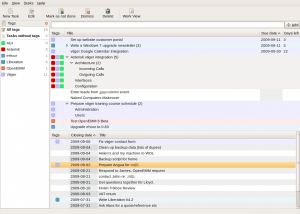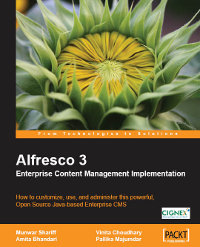Miserware Energy Saving Software now cross-platform
Perhaps you will recall the Miserware power saving software I blogged about last year?
I’m still running it on all of my machines here and it has been great – I really don’t notice it at all. It just sits in the background and according to the logs is saving between ~20% & ~60% power consumption by my various CPUs. And that’s just what it should do.
Miserware have just (18th Jan 2010) started a new trial programme to celebrate the introduction of the first Beta of the power saving software for that [ahem] other OS, Windows. The trial itself and entry into a competition to win iPod Nanos or Asus PCs is open from today and the Micromiser software is available for: Vista, Windows 7, Windows XP, Debian 4.0, 5.0, unstable, Fedora 8, 9, 10, 11, RHEL 4.7, 5.3, SLES 10 and Ubuntu 7.04, 8.04, 8.10, 9.04, 9.10.
If you want to try it out and join in the trial and competition just follow this link to sign up.
Note: Do please note that (on Linux at least – am not sure about Windows as I don’t use it) there is a script you should run after installation called mw-feedback. It sends back textual information about your hardware. This is a plain text file of mine for Lobsang so you can see what it contains. The purpose is so they can identify any hardware issues with the beta software and also verify the widest range of solutions for which the product is suitable.
More book reviews and what I’ve been up to…
I just noticed that I hadn’t posted anything here for what feels like ages – since August the 15th.
So I thought, hmmm, better write something.
But what? A quick update on what’s been going on perhaps? That’ll do…
I’ve been working quite a bit with the brilliant free and open source vtiger CRM recently. Looking at some of the less widely used features and updating our training materials for the recent 5.10 release. I’ve also just submitted a small patch for the Customer Portal feature, to do with its web layout and have been thinking about how best to improve this, and the Webforms modules, to make them easier to customise.
I am also really enjoying using a great little python application called “Getting Things Gnome“. It one of those simple applications which does one job, does it very well and is easy to use. It’s basically an app for jotting down your todo list and making sure you get things done… Here’s what it looks like on my Ubuntu Jaunty desktop:
I also had a mail from those nice people at Packt Publishing suggesting two new books to look at and review for them, In fact a co-author of one of them actually requested that Packt contact me to do a review 🙂 Flattery indeed.
So, we now have four books in the pipeline in no particular order:
Implementing, Administering, and Consulting on Commercial IP Telephony Solutions
- Written by four Asterisk Professionals, this book brings their years of experience together in an easy-to-understand guide to working with Asterisk in small, medium and larger Commercial environments
- Packed with hints, tips, and best practice – learn to avoid the pitfalls that can hinder an Asterisk implementation
- Focused chapters provide thorough, comprehensive, and self-contained instructions on how to deploy Asterisk across different commercial scenarios
This will probably be the first one I read when they arrive next week. It’s hot-off the press, just been released and can be ordered from Packt’s web site here.
My little Asus 1008HA netbook is running very happily with the Alpha build of Ubuntu Karmic Koala. I was at the swimming pool yesterday (not in it but taking my son to his lesson) and using 3G mobile internet to get on line. Battery life is good although not as long as is quoted by Asus. I reckon I get about 3 1/2 to 4hrs of good use. But that is mainly when powering a 3G dongle too – and they get hot. Karmic is shaping up to be a great release I think although to be frank I am really not sure about the new Gwibber interface, and the Empathy IM client hasn’t really floated my boat yet. But hey ho, never mind, at least we have a choice folks.
We are planning some new marketing activities over the coming months, what with the forthcoming release of the best desktop OS of all time and Microsoft releasing their rewrite of Vista, October should be a fun month. Hopefully we’ll have lots of interesting stuff to write about.
In fact I want to share with you a backup script I’ve written in Bash for my home office network and what may well end up being expanded and developed to support some of our commercial systems too. Well I think it’s pretty cool anyway. It wakes up machines in the middle of the night, uses – currently – rsync to back them up, then turns them off again. Configuration is easy and it seems to be working fine. When I get a mo I’ll publish the script source and let you all comment on my terrible bash skills. But I like it…
So there!
Microsoft and Vista’s continued infections: “It’s the user’s fault”
So here we have it. It isn’t Microshaft’s fault that all your PCs keep getting infected with nasty viruses. It’s YOURS.
Some M$ fanboy or paid spokesman called Michael Kleef really does take the biscuit here.
If I, despite all prompting and consent behaviour, choose to go to a (probably dodgy) website, accept the ActiveX control prompts to download (probably dodgy) code and I actually choose to execute that code then I’m hosed. I’m now at the mercy of whatever code I’ve chosen to run – and in many cases its running under your local shell integrity level. The anti-virus vendor is now the last line of defense and you need them to help get the malicious code off the PC.
Now, I’m sure that many of the people who complain of virus attacks will really resent being told they are stupid. And I for one am sure that they aren’t. Naive they maybe but to try and pass the blame for crappy software and a crappy architecture onto them is frankly pretty outrageous. Not only do M$ take your cash, give you rubbish products in return, but now they blame you for their failings too! Why does anyone continue to use their crap? Someone tell me please?
If only people would realise that if you use a decent Operating System, you don’t suffer from these problems. At all.
For pure amusement, I had to copy and share with you a bit more of Mr Kleef’s prose. If he only knew just how hilarious this stuff sounds to a non-windows user…
And its not like the application developer community didn’t know about writing for least privilege. We made it pretty clear over a number of years not to write to protected parts of the OS. Our logo certification reflects this!! UAC is designed to enforce least privilege and for the most part applications do work nicely and behave properly running under UAC without any prompting whatsoever. So far today I’ve run Office, run Camtasia, even Command and Conquer Generals….all without a single prompt.
He He He He He He He – Oh no -Â I’ve got to stop before I…..
Too late.
Vista UAC: Faux Security or What?
I came across this article via slashdot.
If you are a sysadmin or have just fought to get Vista installed because of it’s much-vaunted security model based around UAC, read this and weep.
… Perhaps most importantly though, is the fact that Windows Vista’s newly-implemented security limitations are artificial at best, easy to code around, and only there to give the impression of security. Any program that UAC blocks from starting up “for good security reasons” can be coded to work around these limitations with (relative) ease. The “architectural redesign” of Vista’s security framework isn’t so much a rebuilt system as much as it is a makeover, intended to give the false impression of a more secure OS.
Oh dear.
Basically, it seems, by writing a two part application and an inter-process API – any hacker can circumvent UAC with relative ease.
It’s just as we always thought – Vista is just XP wearing an imitation fur coat.
Now where did I put that Ubuntu 8.04 CD?
Vista beaten by both Apple’s Mac OS X and Linux.
Oh dear, it just keeps getting worse for our friends in Redmond according to Silicon.com…
Microsoft’s Windows Vista operating system is failing to win over silicon.com readers, with two-thirds (65 per cent) saying their organisation will never move onto XP’s successor.
“Never move…” That’s quite a big statement.
Just two per cent of more than 800 respondents to the poll said their company has already made the move to Vista.
So that’s 16 companies out of 800 have moved already.
But despite these concerns, Microsoft says the business uptake of Vista has met expectations and is following the same pattern as previous major OS releases.
Gosh – that’s pretty low expectations for their biggest ever product release. If their shareholders were told this a few years ago [“Yeah, this is going to be our biggest ever OS release. It will cost billions of dollars to build, take us years and years, be a couple late probably and we think – oh at least a few hundred companies will buy it – especially if we give it away – and oh yes, it will have a really pretty interface”] I reckon plenty would have walked away in disgust.
But the bit I liked the best was this:
In another recent silicon.com poll, XP was named by 42 per cent of respondents as their most preferred OS. Vista gained 14 per cent of the vote but was beaten by both Apple’s Mac OS X and Linux.
Goody…
And the winner is… Vista!
LOL,
That bastion of corporate IT journalism, CIO.com has released their nominations for the best [worst] ten Technology failures for 2007.
And coming up the rear is – yes you guessed it – Vista.
One of the longest—five years!—and priciest development projects at Microsoft, the Vista OS has yet to penetrate enterprise computing in any major way. The corporate version shipped in late 2006, and 2007 was supposed to be Vista’s march into the enterprise. But many IT leaders have called it a costly resource hog that makes them love Windows XP. Even Vista’s much-touted security isn’t helping. Now, some companies who’ve been waiting for the first service pack before deploying may skip Vista altogether due to lingering performance concerns.
I have to say I whole heartedly agree with their findings 😉
There are plenty of excellent, reliable, rock-solid, secure and free alternatives out there. Don’t waste your money any more guys and gals. Go and try some Open Source alternatives…







